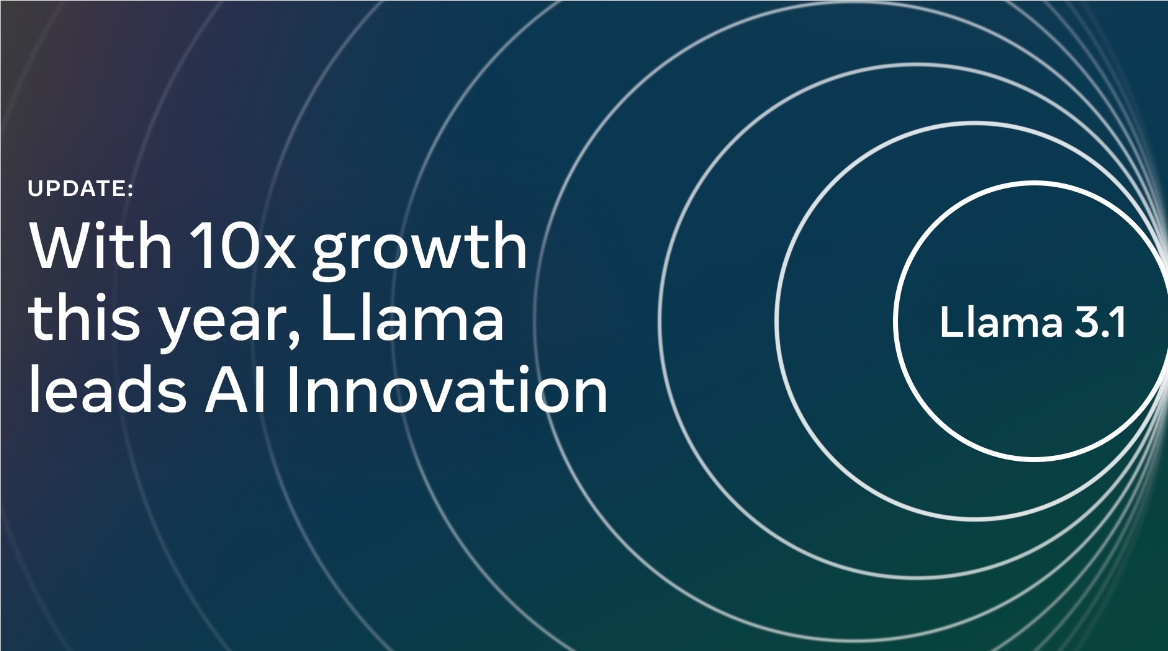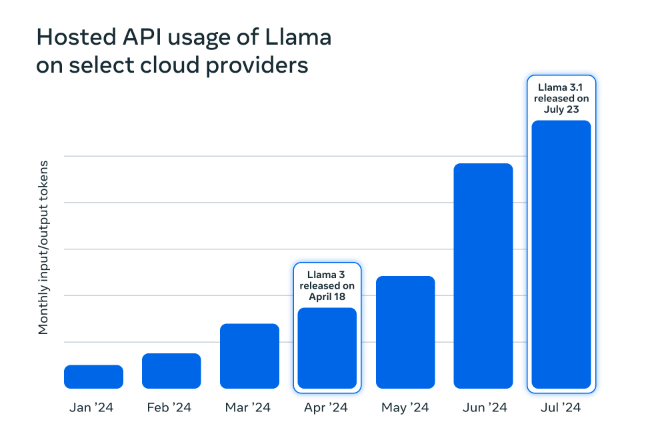Meta recently released a mid-term update, announcing a surge in adoption of its Llama series of large language models, especially after the release of Llama 3.1. The number of downloads on Hugging Face has reached nearly 350 million, a year-on-year increase of more than ten times, and many companies such as Zoom, Spotify and Goldman Sachs have also applied it in actual business. This move marks the significant progress that open source AI has made in competing with closed source models and will have a profound impact on the AI industry landscape.
Recently, Meta Corporation released a mid-term update saying that the adoption rate of its Llama series of models has increased significantly, especially after the launch of the large Llama 3.1 last month. This news shows that open source AI is gradually catching up with the dominance of closed source code.

Meta revealed that the number of downloads of its Llama model on Hugging Face was close to 350 million , an increase of more than ten times compared to last year. At the same time, more and more enterprises are beginning to apply these models, and well-known companies such as Zoom, Spotify, AT&T, and Goldman Sachs are using the Llama model to handle various internal and external needs.
The rapid development of open source AI lies not only in its performance gradually approaching that of closed models, but also in its practical application at the enterprise level. Meta said that although OpenAI started early in the field of generative AI, Meta quickly occupied the market after the launch of the Llama model. Unlike OpenAI's closed strategy, Meta chooses an open approach to allow developers to use and improve these models more freely.
According to Meta, downloads of its model on Hugging Face have increased tenfold since Llama2 was launched last July. Last month, Meta's downloads on the platform exceeded 20 million, which also shows that with the release of Llama 3.1, it has attracted more users. Surveys show that Llama is growing in popularity among the developer community and has become a leader in the open source model.

In terms of enterprise users, AT&T, DoorDash, Goldman Sachs, Niantic, Shopify and other companies are using the Llama series models for various internal and external applications. In addition, Meta also cooperates with multiple cloud service providers to enable developers to use the Llama model more conveniently. Although Meta did not disclose specific partner usage, it said that from January to July, monthly usage of Llama on some cloud service providers increased tenfold.
This shows that Llama's widespread use in enterprises shows that open source AI is quickly catching up with the market. With improved performance and long-term cost advantages, more and more companies are turning to the open source model.
While companies like OpenAI still have a presence in the market, the rise of open source AI will force them to accelerate innovation and reduce costs. It is worth noting that OpenAI attracted huge market attention in the early days of launching generative AI, but now it seems to be lagging behind in product innovation.
Official blog: https://ai.meta.com/blog/llama-usage-doubled-may-through-july-2024/?utm_source=twitter&utm_medium=organic_social&utm_content=image&utm_campaign=llama
Highlight:
The number of downloads of the Llama model on Hugging Face is close to 350 million, a tenfold increase year-on-year.
More and more companies, such as Zoom and Goldman Sachs, are beginning to adopt the Llama model for practical applications.
Open source AI is rising rapidly, putting innovation and cost pressures on companies with closed models.
The success of the Llama model shows that open source AI is rapidly rising, and its performance improvements and cost advantages have attracted many enterprise users. This will have a profound impact on the entire AI industry, forcing closed-source model manufacturers to accelerate the pace of innovation. The future development of open source AI deserves continued attention.